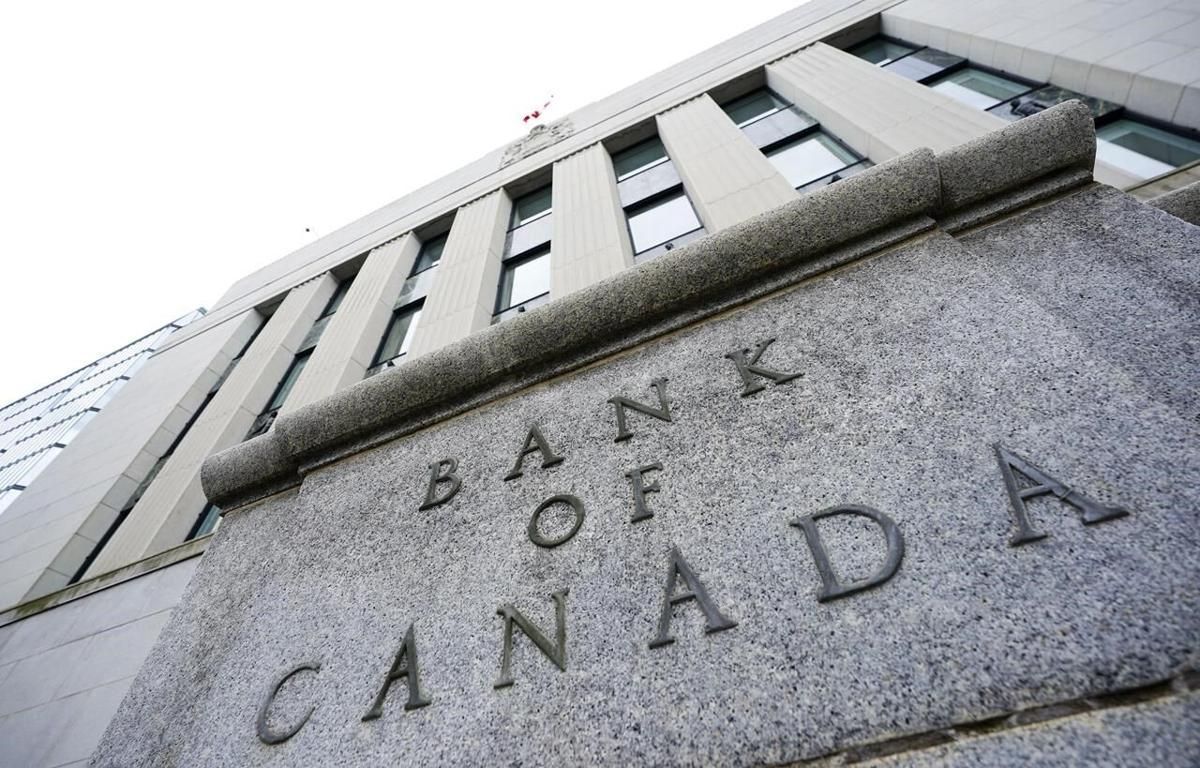Bank of Canada Rate Announcement July 15th, 2020
Nest Mortgage • July 15, 2020
Bank of Canada will maintain current level of policy rate until inflation objective is achieved, continues program of quantitative easing.
The Bank of Canada today maintained its target for the overnight rate at the effective lower bound of ¼ percent. The Bank Rate is correspondingly ½ percent and the deposit rate is ¼ percent. The Bank is also continuing its quantitative easing (QE) program, with large-scale asset purchases of at least $5 billion per week of Government of Canada bonds. The Bank’s short-term liquidity programs announced since March to improve market functioning are having their intended effect and, with reduced market strains, their use has declined. The provincial and corporate bond purchase programs will continue as announced. The Bank stands ready to adjust its programs if market conditions warrant.
While economies are re-opening, the global and Canadian outlook is extremely uncertain, given the unpredictability of the course of the COVID-19 pandemic. Reflecting this, the Bank’s July Monetary Policy Report (MPR) presents a central scenario for global and Canadian growth rather than the usual economic projections. The central scenario is based on assumptions outlined in the MPR, including that there is no widespread second wave of the virus.
After a sharp drop in the first half of 2020, global economic activity is picking up. This return to growth reflects the relaxation of necessary containment measures put in place to slow the spread of the coronavirus, combined with extraordinary fiscal and monetary policy support. As a result, financial conditions have improved. The prices of most commodities, including oil, have risen from very low levels. In the central scenario, the global economy overall shrinks by about 5 percent in 2020 and then grows by around 5 percent on average in 2021 and 2022. The timing and pace of the recovery varies among regions and could be hampered by a resurgence of infections and the limited capacity of some countries to contain the virus or support their economies.
The Canadian economy is starting to recover as it re-opens from the shutdowns needed to limit the virus spread. With economic activity in the second quarter estimated to have been 15 percent below its level at the end of 2019, this is the deepest decline in economic activity since the Great Depression, but considerably less severe than the worst scenarios presented in the April MPR. Decisive and necessary fiscal and monetary policy actions have supported incomes and kept credit flowing, cushioning the fall and laying the foundation for recovery. Since early June, the government has announced additional support programs, and extended others.
There are early signs that the reopening of businesses and pent-up demand are leading to an initial bounce-back in employment and output. In the central scenario, roughly 40 percent of the collapse in the first half of the year is made up in the third quarter. Subsequently, the Bank expects the economy’s recuperation to slow as the pandemic continues to affect confidence and consumer behaviour and as the economy works through structural challenges. As a result, in the central scenario, real GDP declines by 7.8 percent in 2020 and resumes with growth of 5.1 percent in 2021 and 3.7 percent in 2022. The Bank expects economic slack to persist as the recovery in demand lags that of supply, creating significant disinflationary pressures.
CPI inflation is close to zero, pulled down by sharp declines in components such as gasoline and travel services. The Bank’s core measures of inflation have drifted down, although by much less than the CPI, and are now between 1.4 and 1.9 percent. Inflation is expected to remain weak before gradually strengthening toward 2 percent as the drag from low gas prices and other temporary effects dissipates and demand recovers, reducing economic slack.
As the economy moves from reopening to recuperation, it will continue to require extraordinary monetary policy support. The Governing Council will hold the policy interest rate at the effective lower bound until economic slack is absorbed so that the 2 percent inflation target is sustainability achieved. In addition, to reinforce this commitment and keep interest rates low across the yield curve, the Bank is continuing its large-scale asset purchase program at a pace of at least $5 billion per week of Government of Canada bonds. This QE program is making borrowing more affordable for households and businesses and will continue until the recovery is well underway. To support the recovery and achieve the inflation objective, the Bank is prepared to provide further monetary stimulus as needed.
Information note
The next scheduled date for announcing the overnight rate target is September 9, 2020. The next full update of the Bank’s outlook for the economy and inflation, including risks to the projection, will be published in the MPR on October 28, 2020.

Who Knew? 🔮 As expected, or easily predicted, the Bank of Canada formally announced a 0.50% cut to the overnight rate earlier this morning. (click for official announcement) This adjusts Prime Rate down to 5.95%, the lowest level we’ve seen in the past two years, and demonstrates a clear signal that the BoC is doing everything possible to kick-start economic growth. A Green Light to Borrow Governor Tiff Macklem’s message is straightforward: borrowing just got cheaper, and more cuts could be coming. With inflation settling back around the 2% target, he’s effectively giving Canadians the go-ahead to take advantage of lower rates, even if average core inflation is still a touch above the goal. "We want to see growth strengthen," Macklem said, and he’s determined to make it happen.

As anticipated, this week's Bank of Canada announcement kept the overnight rate unchanged. The Bank expects inflation to hover around 3% and drop below 2.50% later this year, aiming to reach the target of 2% by 2025. Wednesday marked the sixth consecutive "no change" announcement, although speculation persists that we should see rates, specifically Prime, drop by .75-1.00% by the end of 2024. Despite no movement being widely anticipated, it is disappointing that further insight into a housing market reset has now been postponed until the next scheduled decision on June 5th. With unemployment at a 26-month high and GDP underperforming, these are two indicators contradicting the notion of rates remaining "higher for longer".

In light of theIn the wake of today's Bank of Canada (BoC) announcement maintaining the overnight rate at 5.00%, Nest brings you a comprehensive overview of the current mortgage landscape. Prime Rates and payments for variable lending products remain unchanged following this non-rate event, leaving borrowers in a familiar position. While the BoC provided limited insight into the potential timing of interest rate cuts, consensus suggests we might witness the first rate cut materializing in June of this year. Despite the ongoing commitment to restoring price stability for Canadians, a message consistent since July 2023, it is essential to highlight key facets of today's mortgage landscape: 1. GDP: Canada's 4th Quarter (2023) GDP surprised with a 1% annualized growth rate, surpassing expectations. However, beneath the positive headline lies a complex narrative. The growth coincided with a population surge of approximately 430,635 people, equating to a 4% annualized growth rate. On a per capita basis, Canadians appear to be experiencing the intended tightening, a trend persisting in 5 of the last 6 quarters. Per capita GDP adjusted for inflation is now lower than Q4 2014, a noteworthy observation challenging the notion of an economy in need of restraint. 2. Labour: In January, Canada's Labor Force added 37,000 jobs, outperforming expectations, leading to a decline in the unemployment rate to 5.7%. However, a closer examination reveals some finer details. Despite adult population growth of 125,500 people, the labor force expanded by a much smaller 18,200. Additionally, the participation rate for the age group of 15-24 witnessed a concerning decline of 130,000 persons. Without this decline, the unemployment rate would be 0.5% higher. 3. Inflation: Canada's Headline Inflation Number registered below expectations at 2.9%. In the ongoing battle against inflation, there has been significant progress since CPI peaked at 8.1% in June 2022, now comfortably below the 3% threshold. Core measures, though still elevated at 3.4% and 3.3% respectively, are expected to ease further as higher rates prompt more mortgage holders to renew into lower interest rate mortgages. 4. Global Considerations: Economic performance and Bond yields have been influenced by global factors. While global economic growth slowed in the fourth quarter of 2023, U.S. GDP growth remained surprisingly robust and broad-based. Inflation in the U.S. and the Euro area continued to ease, accompanied by a notable rise in equity markets. What's Next? The looming question pertains to the BoC's eventual decision to ease interest rates. The per capita statistics and the intricate state of the Canadian economy are interwoven in unpredictable ways, with the wildcard being the surge in population growth. Inflation, triggered by demand exceeding supply, faces uncertainties on how pent-up demand will respond to rate cuts. The surge in Canada's population, almost double the pre-COVID growth, plays a crucial role in shaping the trajectory of the BoC's decisions. Since October 2023, significant drops in fixed mortgage rates have been observed, likely to persist gradually as markets anticipate rate cuts by the BoC. Current odds indicate at least one rate cut by this summer, and two more to follow before year-end ( market survey ). As we approach the Spring Market, optimism and demand gain momentum. If you've adopted a 'wait and see' approach, now is the opportune moment for a conversation. Preparing before the first rate cut is pivotal, as optimism will inevitably transition to confidence, and housing market activity will return to normal levels. Next BoC Announcement: April 10, 2024.

In light of the softening of the Canadian economy, the Bank of Canada opted to maintain its overnight rate for the fifth consecutive time earlier this month leaving Prime and variable product pricing unchanged. While "financial conditions have eased," the Bank also highlighted persistent inflationary pressures stemming from ongoing wage growth and robust immigration. This is exacerbated by the housing supply failing to keep pace. The Bank continues to emphasize the need for restrictive policy to bring inflation back within target, yet “the market” is no longer buying it! With subdued core inflation pressures, declining GDP and house prices, and a softening labour market, it is inevitable that the Bank will need to reduce rates to avoid severe economic consequences. Market consensus is the rate-tightening cycle has passed and both new and existing mortgage holders can look to much needed rate reprieve in 2024. Bond yields have dipped more than -100bpts since October, leading to lower fixed rates. Conventional 5-year fixed rates are offered at 5.69-5.99%, with a noteworthy offer of 4.99% for default-insured purchases. As fixed rates have only dropped -50bpts over the same period, expect further discounting in the weeks ahead. THE (MORGAGE) YEAR THAT WAS, AND WHAT LIES AHEAD?

Governor Tiff Macklem and the Bank of Canada (BoC) made the expected decision this week: no change to the Overnight Rate [no change to Prime] . While the Bank has surprised markets in the past, this week’s hold was widely anticipated. What makes this instance unique is the growing body of evidence showing that higher interest rates are leaving their mark on the economy... Unprecedented Data Points: Second quarter GDP figures fell significantly below expectations, contracting by 0.2% compared to anticipated growth of 1.2% to 1.5%. Despite substantial population growth, the economy should be thriving, but it's not. Time Lag of Rate Impact: Generally, interest rates take over 12 months to exert their full influence. In the last year, we've seen a total increase of 1.25% in Q2 2022 and another 1.75% in rate hikes in Q3 2022. The July 2023 GDP numbers are showing the impact of these hikes, with sluggish growth. Consumption and Employment Challenges: Total retail sales have plateaued, especially when adjusted per capita, reflecting the weight of higher interest rates on consumer spending. The unemployment rate has climbed by 0.5% in the last three months, further complicating the economic picture. What does this mean for mortgages and rates? Inflation is likely to persist at elevated levels for some time, but it won't prompt the BoC to act unless accompanied by a rebound in GDP growth and spending. As disappointing economic data advances expectations of rate cuts, we may experience downward pressure on fixed interest rates sooner than previously forcasted. Experts are nearing a consensus that the BoC has reached its ceiling on rate tightening, with inflation as the last obstacle before easing. In these uncertain times, we are here to assist. Whether you're considering home buying or refinancing for improved cash flow, we can provide the answers tailored to your needs. Please don't hesitate to reach out to discuss your mortgage needs!





